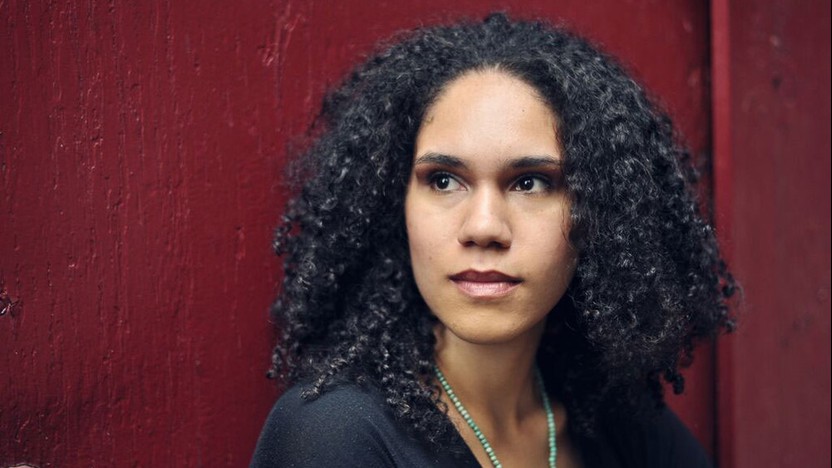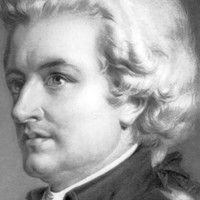Season Finale: Mozart’s Don Giovanni and Prague Symphony

Sponsored By
- June 7, 2019

- June 8, 2019

- June 9, 2019


Sponsored By




Wolfgang Amadeus Mozart’s opera The Marriage of Figaro only ran for nine performances during its first production in Vienna in 1786, an underwhelming box office result. It fared much better when Pasquale Bondini launched a new production that winter in Prague, a success that led the Italian singer and impresario to commission another opera from Mozart and his Figaro librettist, Lorenzo da Ponte, who took up the Spanish legend of the womanizer Don Juan, or Don Giovanni in Italian. Written versions of the tale existed as early as 1630, but the most recent model was a one-act opera that had debuted in Venice early in 1787.
Mozart cataloged Don Giovanni as an “opera buffa,” and da Ponte called it a “dramma giocoso,” terms that emphasized the comedic aspects of the work. Don Giovanni is certainly funny with its deceits, jealousies, mistaken identities and bungled romances, and yet da Ponte’s libretto and Mozart’s music both push the opera toward uncommonly deep pathos and tension. The overture begins with a slow introduction in D-minor, establishing musical gestures and dramatic currents that foreshadow the opera’s searing climax. The rest of the overture momentarily dispels that tragic strain with robust and restless new themes.
Aaron Grad ©2024

Wolfgang Amadeus Mozart, the onetime child prodigy who had dazzled audiences all over Europe, found himself in an unexpected predicament in his early twenties: he was stuck in his hometown of Salzburg. He resigned from the court of the local Archbishop in 1777 and set out with his mother in search of new employment, but his visits to Mannheim and Paris failed to produce any real prospects. At least he came away from his time in Mannheim, home to one of the world’s finest orchestras, with a new arsenal of brilliant ensemble effects.
Mozart returned to Salzburg in 1779 and begrudgingly resumed working for the Archbishop. On the side, he cultivated his own private circle of musicians and patrons, for whom he wrote symphonies, concertos, serenades, and other entertaining diversions. We don’t know exactly the circumstances that led to Mozart composing the Sinfonia concertante for violin and viola in 1779, but we can presume that it was some social event in Salzburg. Mozart, a fine violinist and violist, would surely have played one of the solo parts.
The idea of a concerto for multiple soloists had been around for nearly a century (in the form of the concerto grosso), but the sinfonia concertante was a trendy new approach flourishing in places like London, Mannheim, and Paris — where Mozart actually wrote his first example for a quartet of soloists. In the Sinfonia concertante for violin and viola, Mozart addressed the natural imbalance in projection by calling for the viola to be tuned a half-step higher than normal, increasing the alto instrument’s power. (Modern instruments and metal strings have alleviated this need, so today’s soloists often forgo the transposition.)
One of the sounds Mozart picked up in Mannheim was a long crescendo that gathers strength over a constant bass note, a device so characteristic of the local composers that it was dubbed the “Mannheim roller.” A terrific example is the final climax of the tutti exposition that precedes the arrival of the soloists.
The central Adagio movement unwinds its haunting main theme in skeins of long, singing phrases that weave between the two solo instruments. As in the first movement, the two soloists share a fully composed cadenza, imparting a chamber-music intimacy to this orchestral score. The finale continues the impressive display of ensemble colors, including prominent passages for the horns and oboes, all in support of quick-witted banter between the soloists.
Aaron Grad ©2024
 Listen to Audio
Listen to Audio
First performance January 19, 1787 in Prague.
While in Prague in 1787 to attend a production of The Marriage of Figaro, Wolfgang Amadeus Mozart introduced his first new symphony in three years. He had wanted to visit London that season, and he may have begun the symphony in anticipation of such a trip, but the journey stalled when his father refused to provide childcare. The less ambitious trip to Prague proved valuable anyway, since Mozart secured the opera commission that would result in Don Giovanni. At a time when his star-power in Vienna was waning, Mozart soaked up the adoration he received in Prague, where he purportedly said, “My Praguers understand me.”
The “Prague” Symphony in D Major is one of only three Mozart symphonies with a slow introduction. Foreshadowing similar angst in Don Giovanni, the weighty opening broods over tense music in the key of D-minor. The fast body of the movement counters with a breathless energy akin to the overture from The Marriage of Figaro, with running sixteenth-notes and surprising dynamic contrasts.
The central Andante movement colors the first theme of its sonata form with vertiginous, rising chromatic scales. Later, the development section churns this material through a wide array of keys and moods. The symphony forgoes a minuet and proceeds directly to the finale, which quotes the portion of The Marriage of Figaro where Susanna tries to rush the love-struck page, Cherubino, out the window. It is a fitting sendoff for such a drama-filled symphony, and it must have delighted those Praguers who gobbled up Figaro and all things Mozart.
Aaron Grad ©2025
Get driving directions and find nearby parking.
Find dining options close to the venue.
View seating charts to find out where you'll be seating.
SPCO concerts are made possible by audience contributions.
For exclusive discounts, behind-the-scenes info, and more:
Sign up for our email club!
